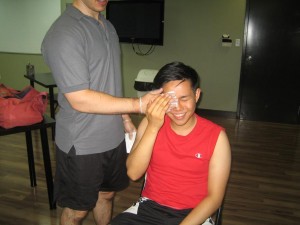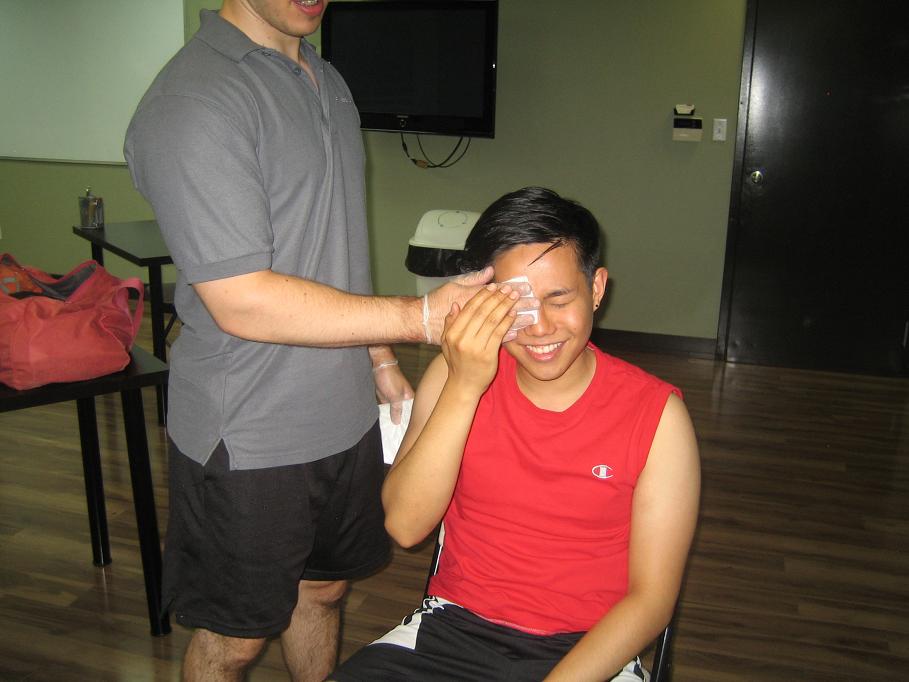The skin normally secretes sebum, fluid, and perspiration through the sweat glands to help regulate the body temperature. However, there are instances when the sweat glands excessively produce and secrete these substances that cause skin disorders, especially in the areas where glands can be found in large numbers.
The material posted on this page on skin disorders, infections and minor emergencies is for learning purposes only. To learn to recognize and manage emergencies that include wounds and infections register for a first aid class with a Canadian provider today.
Seborrheic Dermatitis
Seborrheic dermatitis is a chronic inflammatory skin disease that normally takes place in regions that are well supplied with sebaceous glands (face, scalp, eyebrows, ears, axilla, under the breasts, groin, and folds of the buttocks) or between the skin folds.
It has two forms, namely the oily and dry form. The oily form is characterized by moist and greasy skin, with or without scaling, and mild redness. On the other hand, the dry form is manifested by flaky scaling of the scalp, commonly called dandruff. The scaling is usually accompanied by pruritis (itchiness). Seborrheic dermatitis is caused by hormonal imbalance, infection, nutritional status, emotional stress, as well as genetic predisposition.
Management of Seborrheic Dermatitis
The goal of treating seborrheic dermatitis is to control the disorder and prevent its recurrence since there is no known cure. You can provide the following treatment initially if you do not want to see a doctor at the onset of the skin disorder.
- Application of topical corticosteroid cream prevents secondary inflammation. Be careful not to apply this cream in the eyes because it can cause glaucoma and cataract.
- Proper skin hygiene is very important. The skin should be kept clean and dry at all times, especially under the folds of the skin where bacterial count is high.
- Use of antiseborrheic shampoos that contain selenium sulfide, zinc pyrithione, and salicylic acid sulfur.
- Use of two or three different types of shampoo alternately is encouraged to prevent resistance. Left the shampoo for 5 to 10 minutes during treatment.
Acne vulgaris

Acne is the most common skin problems encountered by adolescents due to androgen stimulation. The initial lesions of acnes are comedones. The closed comedones (white heads) are clogged oils and keratin that plug dilated follicles. The open comedones (black heads) are closed comedones that come in contact with the external environment.
For unknown cause, some closed comedones rupture and cause an inflammatory response that may result from the action of certain skin bacteria. The inflammation then causes inflammatory pustules, and erythematous papules.
Acne is graded. A person with a grade I acne has less than 10 comedones, pustules, or papules on one side of the face; grade II acne has 10 to 20; grade III has 25 to 50; and grade IV with more than 50.
Management of acne vulgaris
1.) Dietary therapy – avoid chocolate, cola, fried foods, and milk product
2.) Skin hygiene – wash the skin at least twice a day with cleansing soap.
3.) Avoid oil-based cosmetics.
4.) Topical antibiotics that should be prescribed by a dermatologist.
References:
Mayo Clinic. Seborrheic Dermatitis. Retrieved on July 12, 2014 from http://www.mayoclinic.org/diseases-conditions/seborrheic-dermatitis/basics/definition/con-20031872

